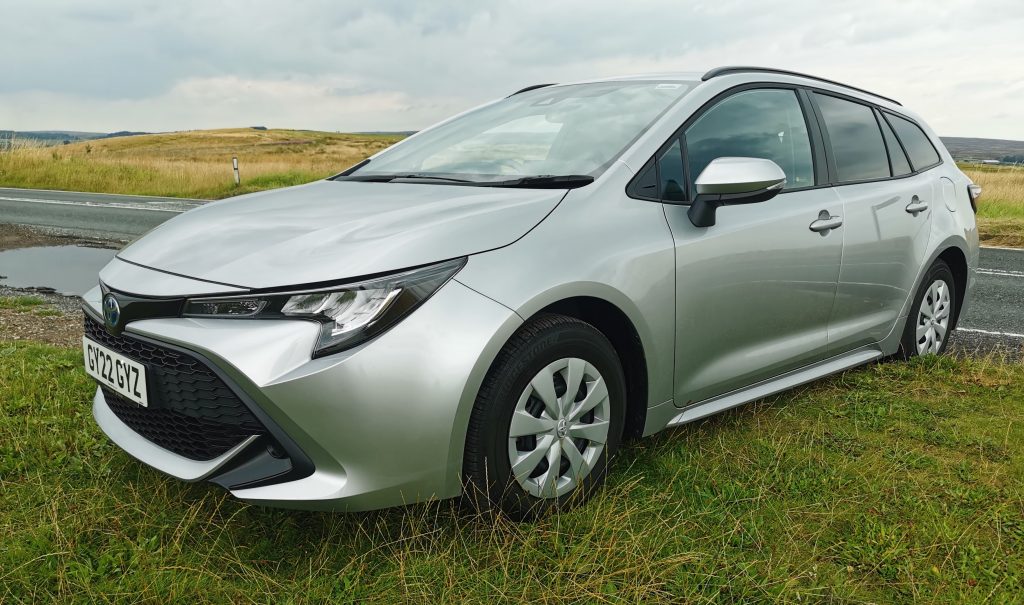Toyota Corolla Commercial Review
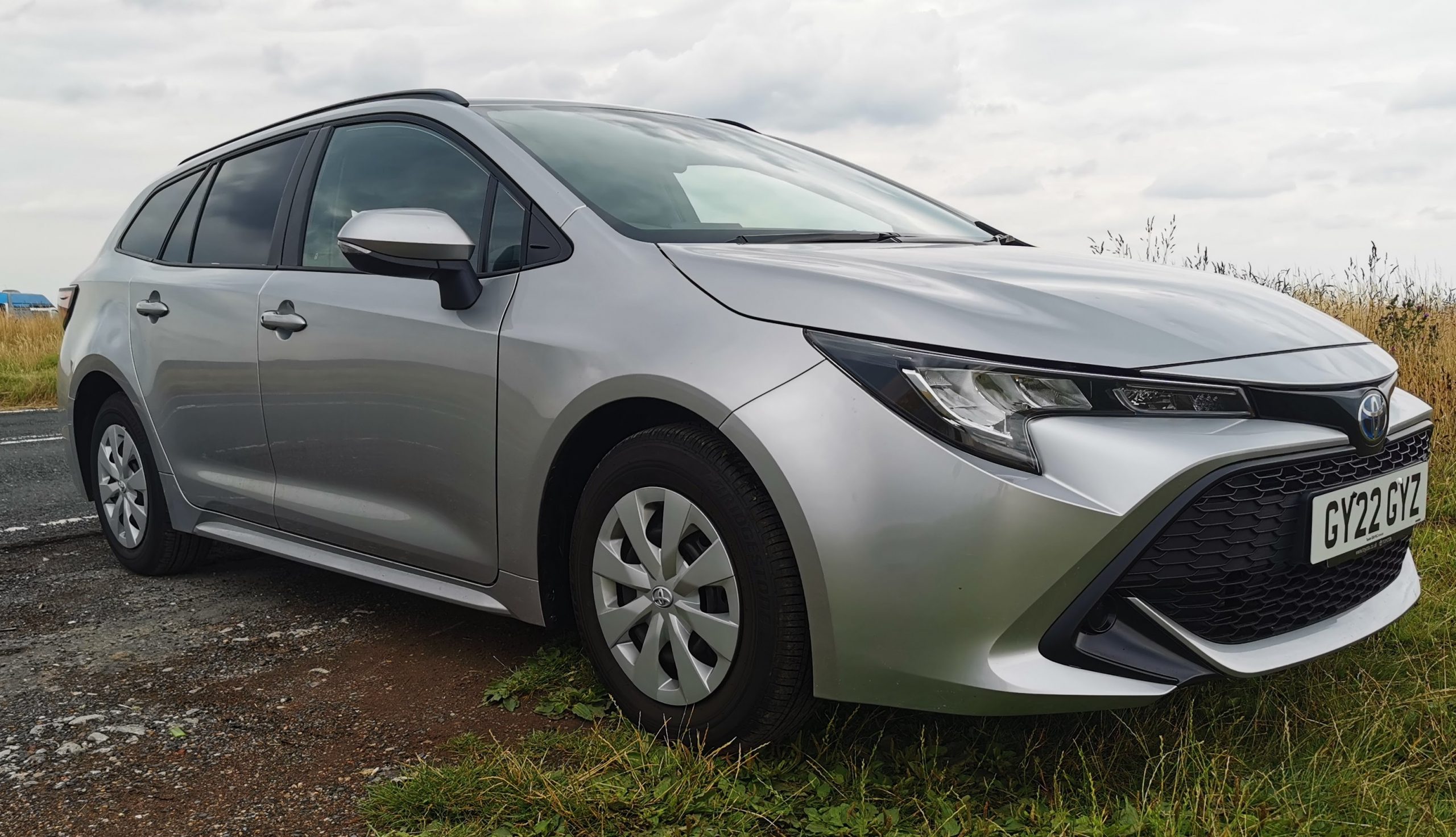
Epitomised by the hugely successful Vauxhall Astra van, the number of CDV’s available on the UK market dwindled to almost zero when Ford, which has changed its mind on a number of occasions, finally signalled the end of the Fiesta van recently after the latest update of the passenger car saw the vehicle only being offered in five door guise, making a van version impractical.
Introduction
Toyota (now under ‘Toyota Professional’ branding) took the van world by surprise at the 2021 CV show by unveiling the Corolla Commercial. Based on the Touring Sport estate car, the exterior of the van gives few clues that it is a commercial vehicle. Manufactured in the UK, the van retains the rear passenger doors, but all the side glazing behind the B pillar is obscured by black vinyl. Inside, the rear seats and belts are omitted, with a full length load floor with tie down points in its place as is a half steel, half mesh bulkhead protecting the occupants from shifting loads.
Hybrid technology
There’s only one power unit on offer, and wisely Toyota has blessed the Corolla Commercial with a petrol / electric hybrid unit. A true hybrid, the 1.8 litre engine producing 122hp and coupled to an automatic gearbox works in conjunction with an electric motor, intelligently providing power to the front wheels by virtue of electricity, engine, or, more commonly a combination of the two, graphically illustrated should you select the option on the multimedia display.

There’s no ‘plug in’ facility, the engine replenishing the charge in the battery pack simultaneously with powering the van, allowing for a few miles of pure electric driving should you press the EV switch. There are three selectable drive modes, the default Normal, Sport, and the Eco, offering the ultimate in electric range.
Specification
There’s just the single trim level, which, hinting at its link to the car is pretty generous. There’s no sat nav, although this is becoming increasingly obsolete with the inclusion, as in the Corolla, of Android Auto / Apple Carplay Smartphone integration. There’s dual zone climate control, heated seats and the 8 inch multimedia screen also displays the output from the reverse camera.
Cab storage isn’t particularly brilliant, especially if the driver is used to a van with its big door bins and dash top trays.
Driver and safety aids are extensive with the inclusion of adaptive cruise control as standard. The Corolla Commercial also gets driver attention alert, lane departure control, lane trace assist, pre-collision system with pedestrian and cyclist detection and road sign assist.
Externally, the van looks sleek and modern, although, perhaps wisely Toyota has chosen to dispense with alloy wheels in the Commercial, the steel ones being covered by full size trims. The bumpers, front spoiler, door mirrors and handles are all body coloured, offset nicely on the silver test van by the black front grille.
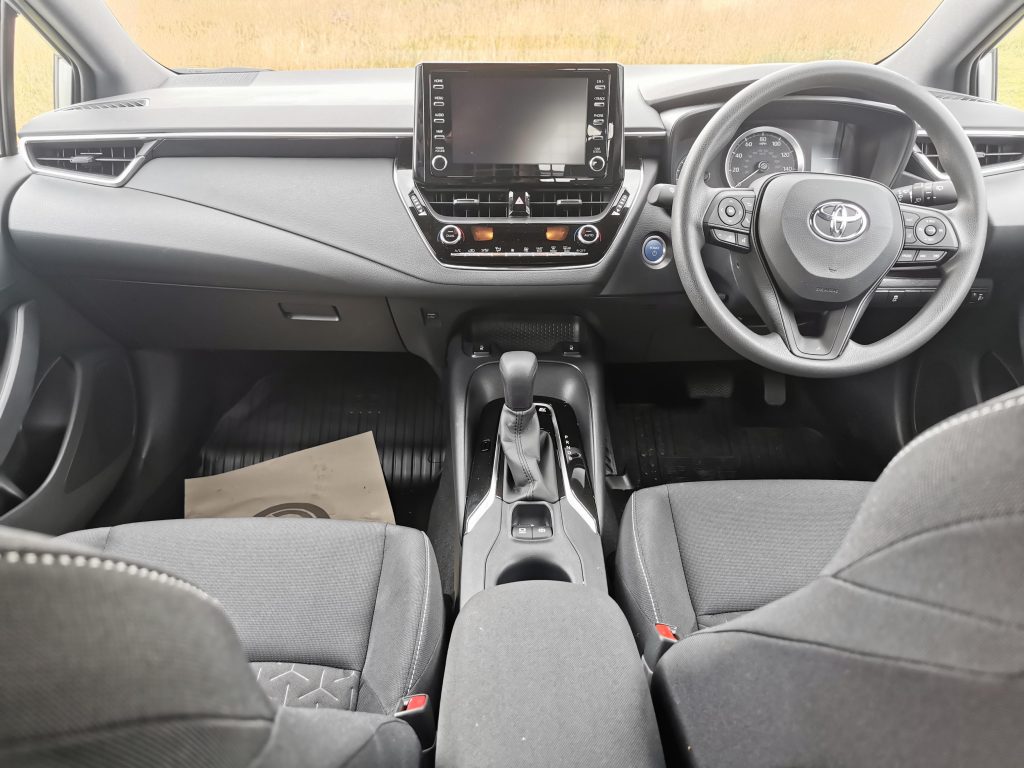
The business end.
Opening the rear tailgate for the first time the amount of loadspace comes as quite a surprise. In numbers, there’s a loading length of 1558mm, a width of 1430mm (reduced to 952mm between the wheelarches) and a height of 1155mm. Payload is disappointing however, at just 425kgs and 750kgs is your limit for a braked trailer.
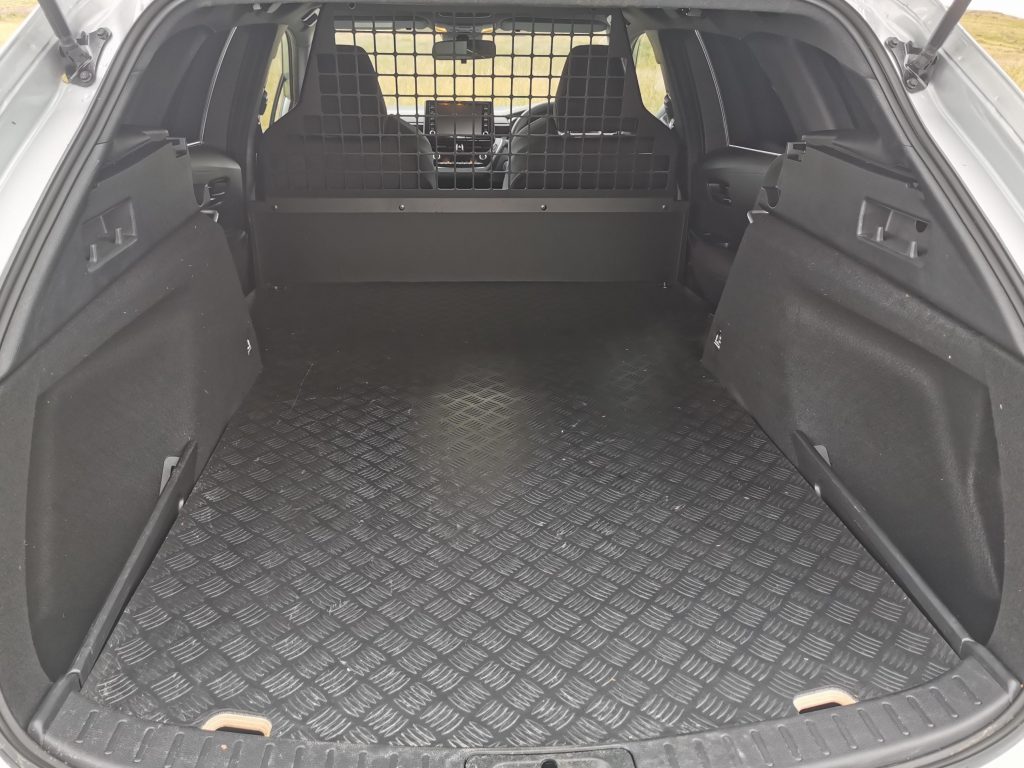
Although the loadspace floor (which lifts at the rear to reveal some underfloor storage space, formerly occupied by a spare wheel) feels solid enough with a rubberised coating, perhaps where durability slips a little is the inclusion of the rear door cards (or trim) which, along with the original boot sides and superfluous fabric headlining are all likely to quickly become damaged, there being no obvious solution to protecting these areas. The bulkhead looks strong enough, the mesh section allowing visibility through the rear view mirror.
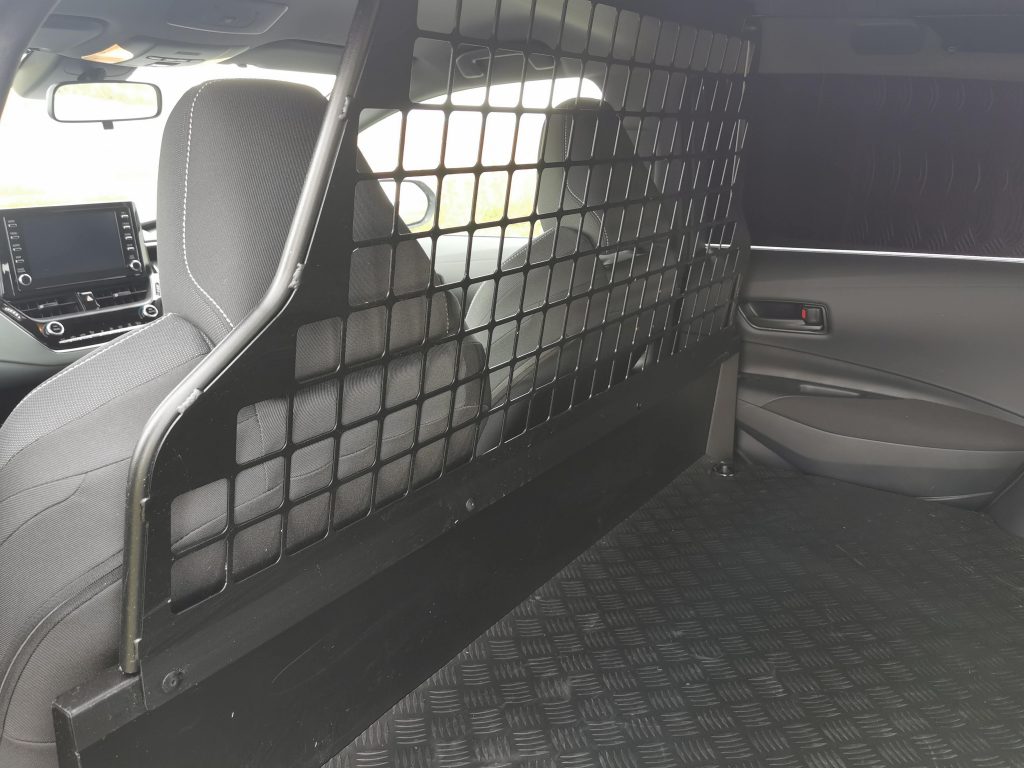
On the road
Switching on (rather than starting) the Corolla is a silent affair with just a gentle ping telling the driver that the van is good to go. An all electric departure gives decent acceleration, but where Toyota has excelled is the almost imperceptible transition between electric and engine propulsion, the operation being seamless and fluid with no driver intervention. I became addicted to watching the graphical display which was often the only method of telling how the van was being powered. Lifting off the accelerator saw energy flowing back to the battery pack as regeneration took effect, also helping slow the van down especially if ‘B’ was selected rather than the usual D mode on the transmission selection control.
Performance overall is reasonably brisk but nothing special. Noise levels in the cab generally are low, but if you put your foot down, the engine note becomes quite rapid and a little intrusive. Steering and handling are what you would expect from a mid range passenger car, crisp and responsive.
Visibility isn’t fantastic, and the first time you come to reverse out of a parking space or turn out of a tight, angled junction, you’ll realise just how much you use the rear side windows in a car to check for obstructions or traffic.
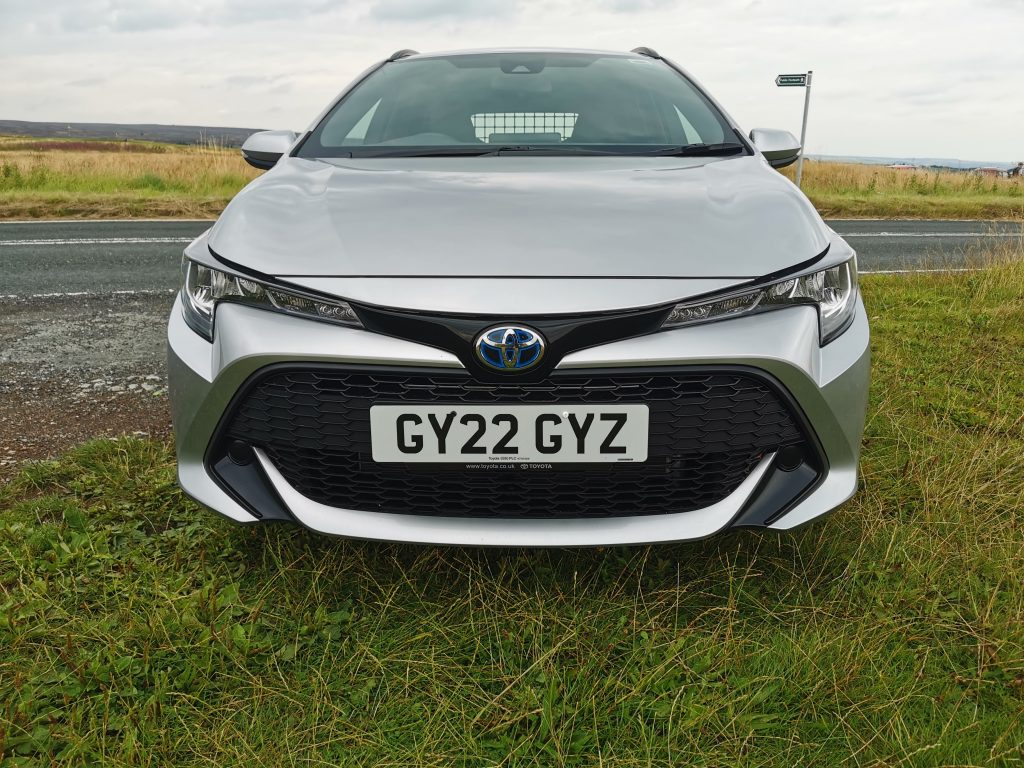
Verdict
There’s definitely a market for the Corolla Commercial, particularly for fleet users. Whilst a service engineer might feel that they are entitled to a company car, the employer will want a vehicle that can easily accommodate tools and other items required for the working day. There’s also the VAT aspect, which is not normally recoverable on a car which is not used 100% for commercial purposes.
The driver too will benefit financially, being a van the Benefit in Kind taxation burden will be substantially less than for an equivalent car. The big drawback to him or her will undoubtedly be the lack of passenger seats, but other than that, most if not all drivers would be more than happy with the Corolla Commercial rather than a conventional panel van.
